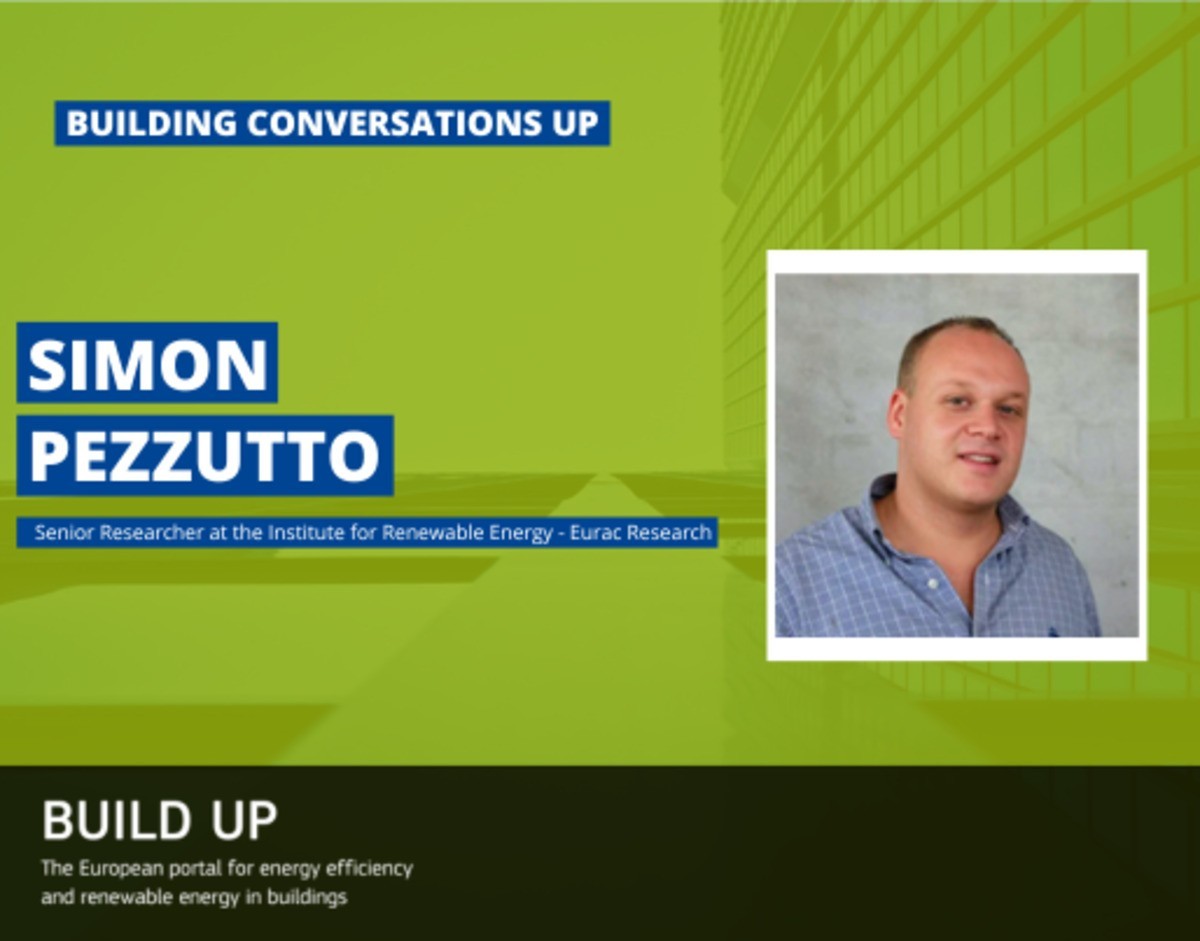Building Conversations Up with Simon Pezzutto
Emily Coe-Björsell

BUILDING CONVERSATIONS UP with Simon Pezzutto, Senior Researcher at the Institute for Renewable Energy - Eurac Research. This month, BUILD UP is exploring the topic of Sustainable Cooling Solutions.
In this interview, we dig into the topic together with Simon Pezzutto, asking questions such as how sustainable cooling is addressed by European policies and directives, if the current investment level for sustainable cooling in the EU is sufficient, what some examples of sustainable cooling are, and more.
“There are many alternative and sustainable space cooling solutions, but they represent less than 1% of the solutions available on the market”
BUILD UP: Heatwaves that are more frequent and increasing average temperatures dramatically boost demand for space cooling and air conditioning, which may hinder other energy efficiency measures. What can be done to avoid this, while giving the right to thermal comfort to all?
SIMON PEZZUTO: The demand for and installation of space cooling technology initially started in public buildings, such as hospitals and offices, but it is now increasing also in the residential sector. In fact, the demand for space cooling and the implementation of space cooling solutions are rapidly expanding due to more frequent heatwaves. The implementation in dwellings has specifically targeted bedrooms, in which the space cooling technologies is usually comprised of split or multi-split systems or portable units. This higher demand and usage of space cooling leads to a big problem because the peak of these systems can cause power switching off during heatwaves. How could this be solved? There are many alternative space cooling systems which consume little energy. Among the most used, we can distinguish between passive cooling systems (e.g., shading systems), and active cooling systems (e.g., thermally driven heat pumps activated by solar thermal energy or geothermal energy).
BUP: Could you present a few examples of sustainable space cooling solutions (including passive solutions) in buildings?
SP: There are many alternative and sustainable space cooling solutions, but they represent less than 1% of the solutions available on the market. They include:
-
Absorption and adsorption space cooling devices, also called thermally driven heat pumps (TDHPs), are powered by natural gas or other heat sources, such as process steam, solar thermal and waste heat steam. These devices are the most diffused in the market, even though representing only less than 1%.
-
Desiccant space cooling systems which comprise of evaporative liquid desiccant system, ground-coupled solid desiccant system, stand-alone liquid desiccant system, and stand-alone solid desiccant systems.
-
Sky radiative cooling is a pure passive solution that could remove heat at a rate of around 100 W/m2, however there are still doubts about the ability of materials to work in different locations and climates. Tests show that this works best in dry and sunny climates.
-
Other passive solutions include blinds, building insulation combined with proper ventilation, green roofs and walls, wind catchers, etc.



